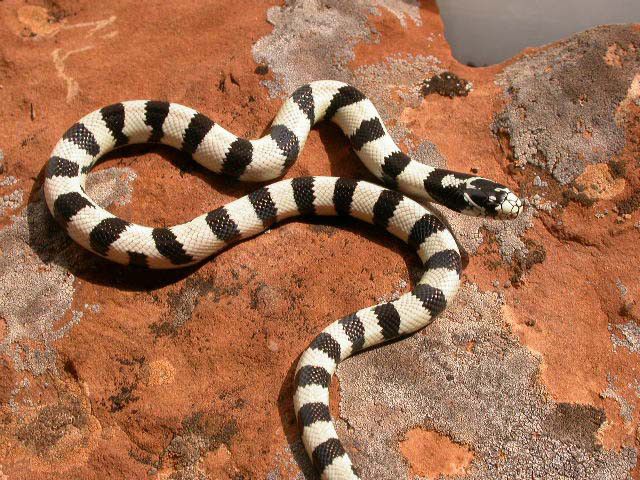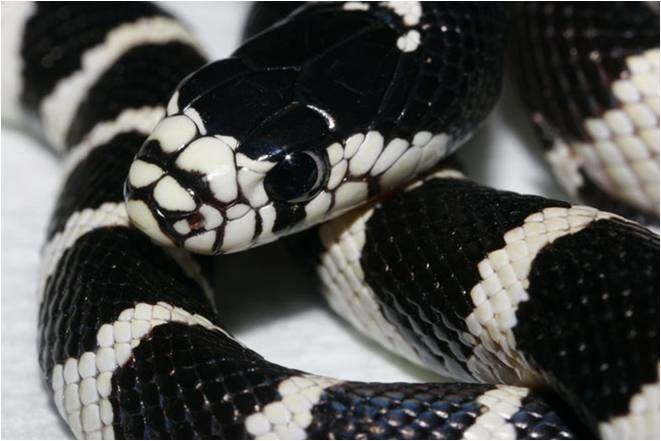Have you ever come across a sleek, dark serpent adorned with striking white lines, leaving you both captivated and curious? You’re not alone in your intrigue! These fascinating creatures, often referred to as black snake with white stripes, have captured the attention of nature lovers and casual observers for generations. In this detailed guide, we’ll delve into the enigmatic world of these extraordinary reptiles, providing you with the knowledge to identify, understand, and appreciate these often misunderstood animals.
What Are Black Snakes with White Stripes?
Black snakes with white stripes aren’t a single species but rather a term that describes several snake species found throughout North America. These serpents are recognized for their eye-catching appearance, typically showcasing a dark body contrasted by light-colored stripes running along their length.

Key Characteristics:
- Predominantly black or dark-colored body
- Distinct white, cream, or yellowish stripes
- Sleek, elongated body shape
- Smooth scales that give a glossy appearance
Meet the Stars: Common Species of Black Snakes with White Stripes
Let’s take a closer look at some of the most common species that fit this description:
1. Black Rat Snake (Pantherophis obsoletus)
- Also Known As Eastern Rat Snake
- Length: 3-6 feet (0.9-1.8 meters)
- Appearance: May have faint white stripes or blotches on a black background
- Habitat: Found in forests, fields, and even suburban areas across the eastern and central United States
- Fun Fact: They are excellent climbers, often spotted in trees or attics.
2. Black Racer (Coluber constrictor)
- Length: 3-5 feet (0.9-1.5 meters)
- Appearance: Solid black with a white or cream-colored chin and throat
- Habitat: Prefers open areas and forest edges across North America
- Fun Fact: True to its name, it’s one of the fastest snakes in North America!
3. Ring-necked Snake (Diadophis punctatus)
- Length: 10-15 inches (25-38 cm)
- Appearance: Dark-colored with a distinctive yellow or orange ring around the neck
- Habitat: Moist, wooded areas throughout much of the United States and parts of Canada
- Fun Fact: Despite their small size, they’re mildly venomous but harmless to humans.
4. Garter Snakes (Thamnophis spp.)
- Length: 1.5-4 feet (0.45-1.2 meters)
- Appearance: Several species can be black with white or yellow stripes
- Habitat: Various habitats across North America, often near water sources
- Fun Fact: They’re one of the few snake species that give birth to live young instead of laying eggs.
Where to Spot These Striped Serpents: Geographic Distribution
Black snakes with white stripes can be found in various regions across North America. Let’s explore their distribution:
North Carolina’s Striped Residents
The Tar Heel State is home to several species, including:
- Black Rat Snakes
- Eastern Garter Snakes
- Ring-necked Snakes
California’s Unique Striped Serpents
While California may not host the classic “black snake with white stripes,” it boasts some uniquely patterned species:
- California Striped Racer
- Santa Cruz Garter Snake
Georgia’s Slithering Stripes
Georgia’s diverse habitats support:
- Eastern Kingsnakes (with white chain-like patterns)
- Black Racers
- Eastern Garter Snakes
Arizona’s Desert Dwellers
Arizona’s unique ecosystem hosts:
- Sonoran Gopher Snake (can have a dark coloration with light stripes)
- Western Black-headed Snake
Virginia’s Forest Friends
Virginia’s woodlands are home to:
- Eastern Rat Snakes
- Northern Black Racers
- Eastern Garter Snakes
Florida’s Sunshine Serpents
Florida’s warm climate supports:
- Southern Black Racer
- Eastern Garter Snake
- Ring-necked Snake
Behavior and Habitat: Understanding These Striped Serpents
To truly appreciate these fascinating creatures, let’s dive into their behavior and preferred habitats:
Preferred Habitats
Black snakes with white stripes are versatile and can thrive in a range of environments:
- Forests and woodlands
- Grasslands and meadows
- Rocky hillsides
- Suburban areas with adequate cover
Behavior Patterns
These snakes display fascinating behaviors that aid in their survival:
- – Many are skilled climbers, often seen in trees or on buildings
- – Some species, such as Black Racers, are recognized for their remarkable speed
- – Most are diurnal, basking in the sun to maintain their body temperature
- – Generally non-aggressive, they tend to escape rather than confront threats
Diet and Hunting
These snakes are vital in managing pest populations:
- Their diet mainly consists of rodents, small mammals, and birds
- Some species also consume insects, frogs, and even other snakes –
- Many use constriction to capture their prey, while others swallow it whole
Safety First: Are Black Snakes with White Stripes Dangerous?
A common question regarding these snakes is whether they are a danger to humans. Here’s what you need to know:
Venomous vs. Non-venomous
Fortunately, most black snakes with white stripes found in North America are non-venomous. However, it’s important to remain cautious and respectful when encountering any snake in nature.
Defensive Behaviors
Although they are not usually aggressive, these snakes may exhibit defensive behaviors if they feel threatened:
- Coiling and striking (typically with a closed mouth)
- Vibrating their tails (to mimic a rattlesnake)
- Releasing a foul-smelling musk.
Safety Tips
When you come across a black snake with white stripes:
- Keep a safe distance of at least 6 feet (2 meters)
- Avoid trying to handle or capture the snake
- If necessary, reach out to local wildlife services for safe removal
- Teach children about snake safety and the importance of respecting wildlife
Conservation: Protecting Nature’s Striped Sentinels
Black snakes with white stripes are essential to their ecosystems:
Ecological Benefits
- They help control rodent populations, which prevents crop damage and the spread of disease
- They serve as prey for larger predators, helping to maintain the balance of the food chain
- They contribute to the ecological balance in various habitats
Conservation Efforts
Although many species are not currently at risk, habitat loss and human persecution present challenges. Conservation efforts aim to:
- Preserve and restore habitats
- Educate the public about the importance of snakes in ecosystems
- Reduce road mortality through wildlife crossings and increase driver awareness
Lookalikes: Avoiding Misidentification
It’s crucial to distinguish black snakes with white stripes from other similar-looking species, as well as from snakes that have unique cultural significance. One such example is the Alicante snake, a fascinating species native to Mexico. Unlike the black snakes with white stripes we’ve discussed, the Alicante snake (Pituophis deppei) has a pattern of dark blotches against a lighter background, typically ranging from tan to reddish-brown. While it’s not striped, it’s often subject to similar myths and misconceptions as other snakes. For instance, there’s a folklore belief that it can drink milk directly from cows, which is scientifically unfounded. Understanding the differences between these species helps in accurate identification and dispelling common myths about snakes.
Red Snake with Black and White Stripes
- Coral Snakes (venomous) have red, yellow, and black bands
- Scarlet Kingsnakes (non-venomous) mimic coral snakes but have a different band order
Orange Snake with Black and White Stripes
- Milk Snakes can have orange, black, and white bands
- Some variations of Corn Snakes may look similar
White Snake with Black Stripes
- Albino variations of some species may appear white with dark stripes
- Pine Snakes can have a light background with dark stripes
To help you differentiate between these similar species, here’s a comparative table:
| Characteristic | Black Racer | Garter Snake | Rat Snake | Ring-necked Snake | Coral Snake | Milk Snake |
|---|---|---|---|---|---|---|
| Size | 3-5 feet | 1.5-4 feet | 3-6 feet | 10-15 inches | 2-3 feet | 2-4 feet |
| Pattern | Solid black | Striped | Blotched | Ringed neck | Banded | Banded |
| Habitat | Various | Near water | Forests | Moist areas | Sandy areas | Various |
| Diet | Varied | Amphibians | Rodents | Small prey | Other snakes | Small prey |
| Venom | Non-venomous | Non-venomous | Non-venomous | Non-venomous | Venomous | Non-venomous |
| Behavior | Fast, flees | Docile | Climber | Secretive | Reclusive | Docile |
It’s important to remember that while this information serves as a general guide, individual snakes can differ in appearance. Always prioritize safety and reach out to local wildlife experts if you’re uncertain.
FAQs Section
To help answer common questions about black snakes with white stripes, here’s a useful FAQ section.
Most black snakes with white stripes found in North America are non-venomous. However, it’s always wise to exercise caution around any wild snake.
Observe from a safe distance. These snakes are typically beneficial and will usually move away on their own. If removal is necessary, it’s best to contact a professional wildlife service.
While color patterns can provide some guidance, it’s important not to rely solely on appearance. Venomous snakes often have triangular heads and vertical pupils, but there are exceptions. When in doubt, keep a safe distance.
Wild snakes should not be kept as pets. If you’re interested in owning a snake, research captive-bred species and consult with a reptile specialist.
Conclusion:
Black snakes with white stripes are not just visually appealing; they are essential to our ecosystems. From the fast-moving Black Racers to the secretive Ring-necked Snakes, these reptiles play important roles in maintaining ecological balance. By learning about and appreciating these often misunderstood creatures, we can help in their conservation and the protection of biodiversity. Whether we find them in our backyards or on hiking trails, these snakes deserve our respect and care. Let’s admire their beauty from a safe distance, inform others about their significance, and strive to coexist peacefully with these graceful reptiles. In doing so, we not only protect their future but also enhance our relationship with the natural world.
If you are interested in snakes explore more pages of this website you


